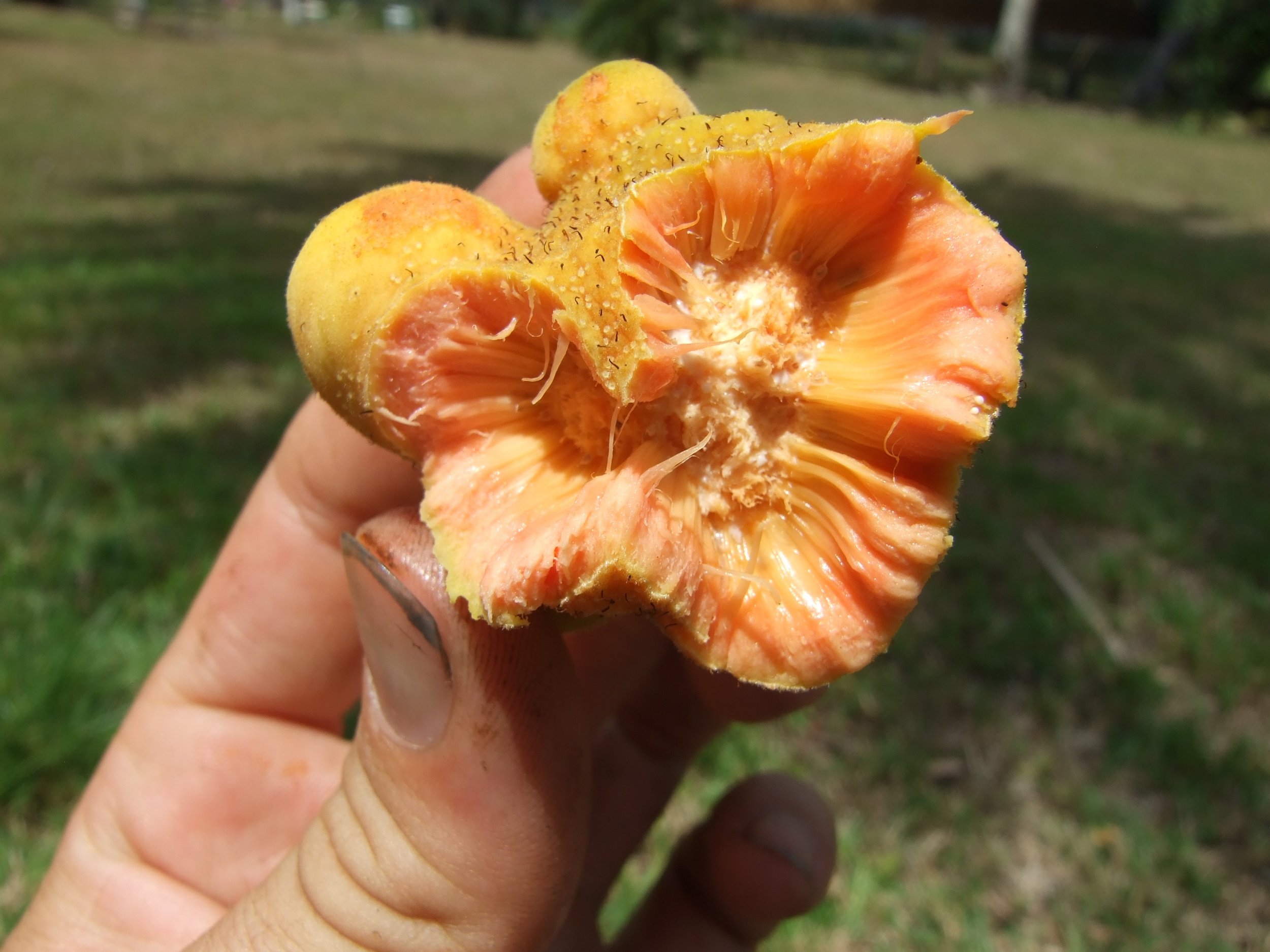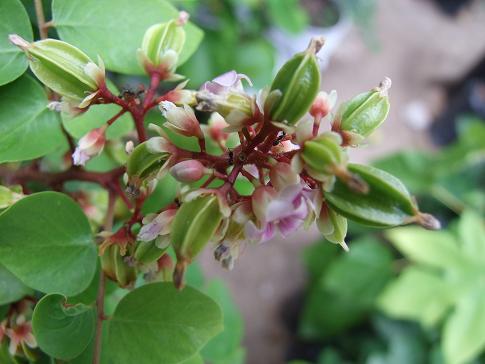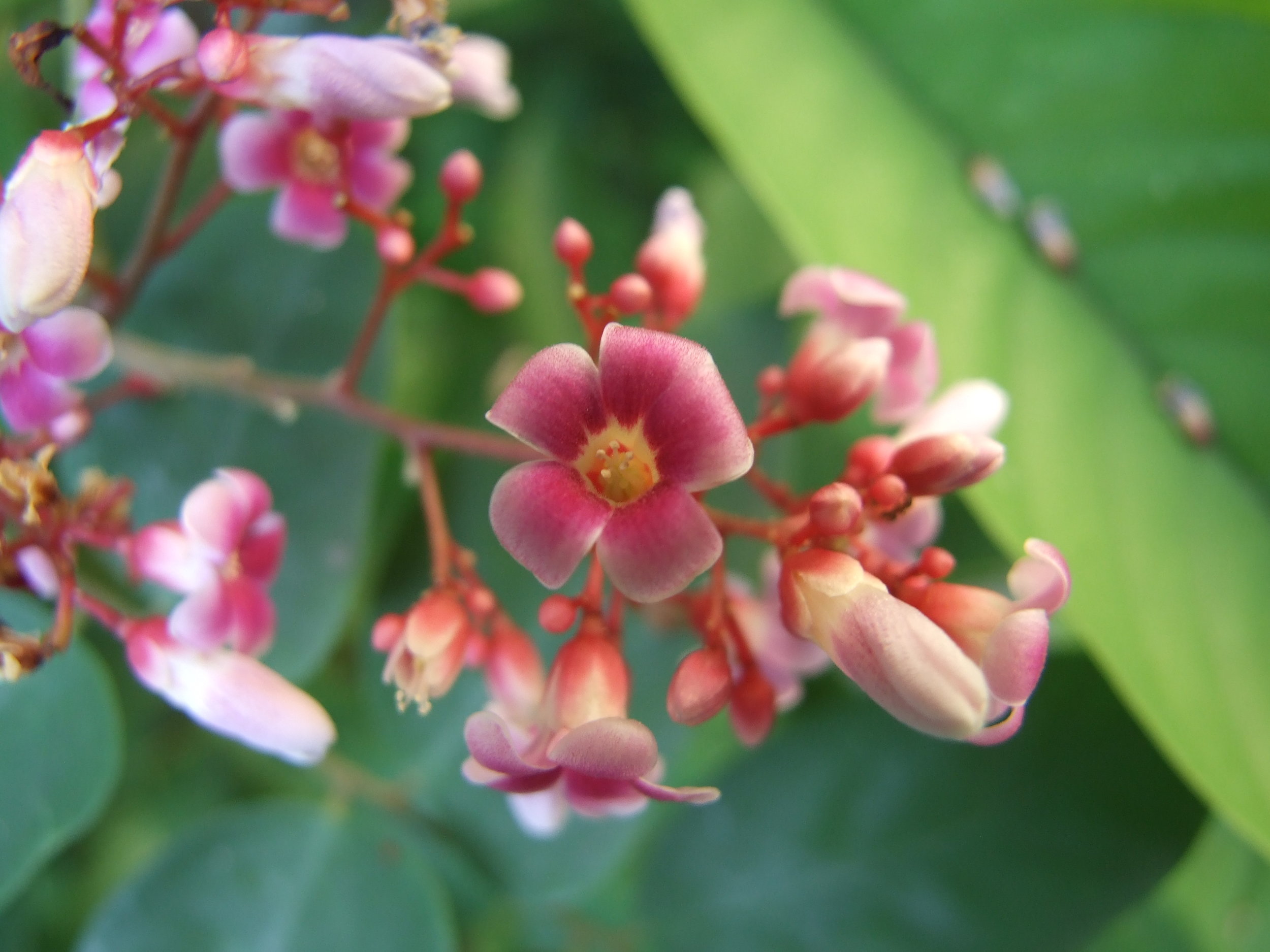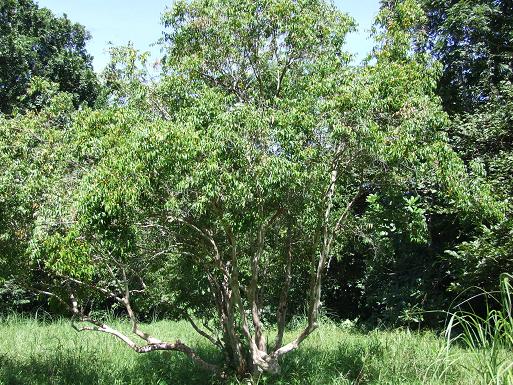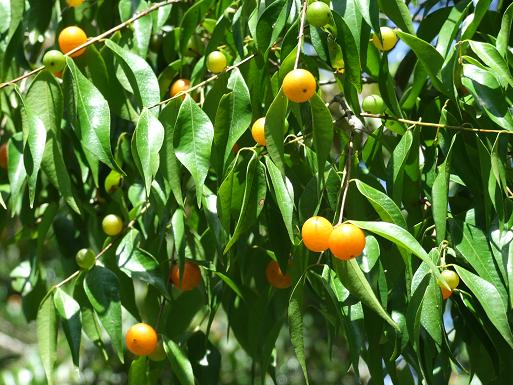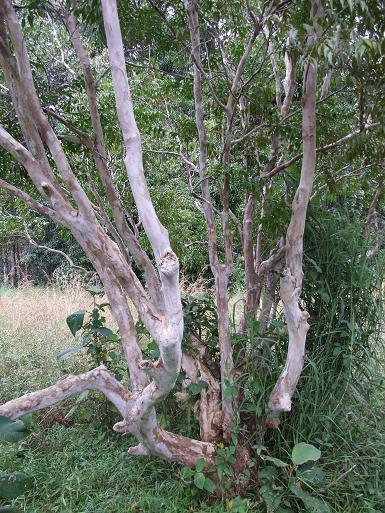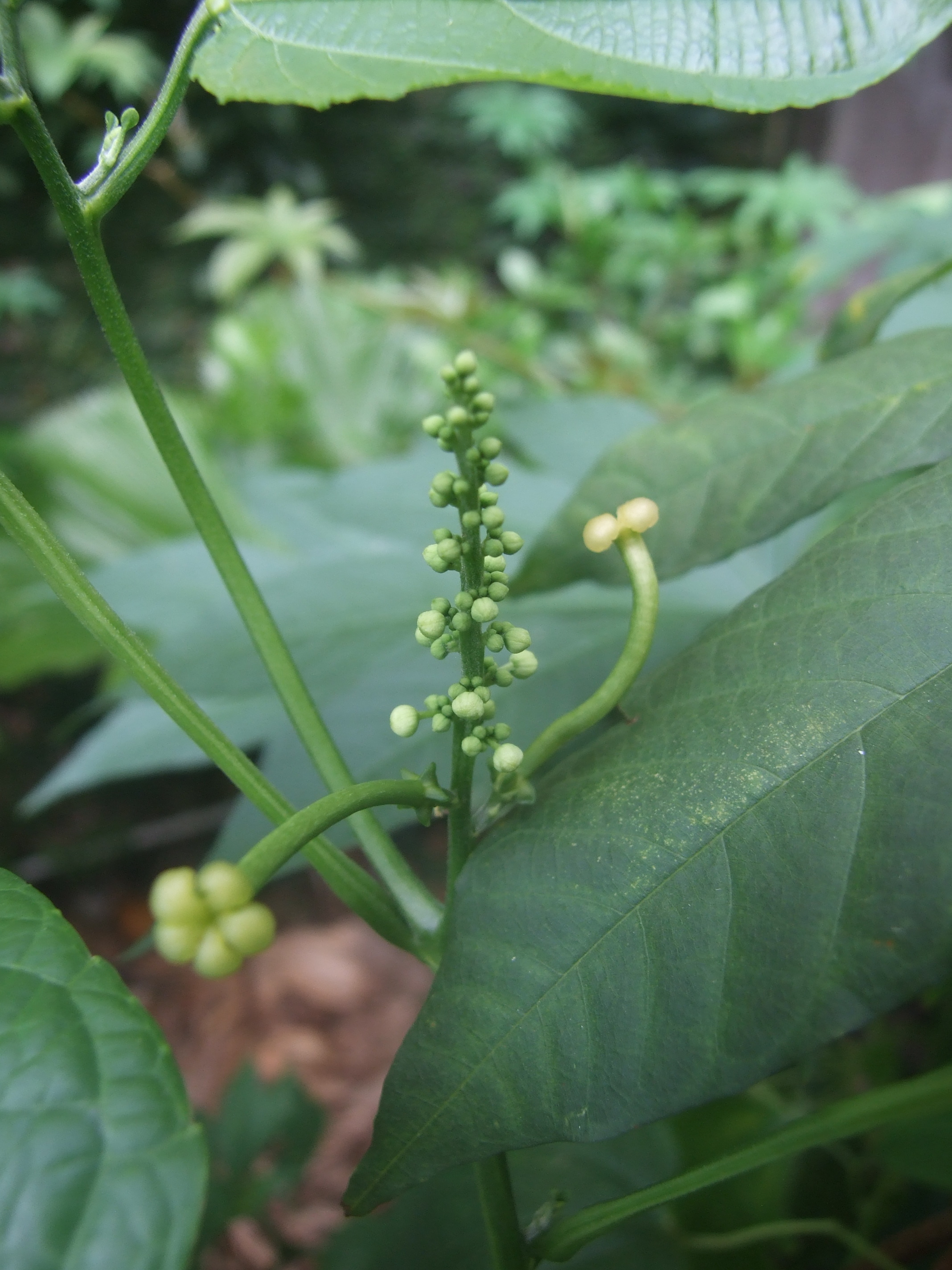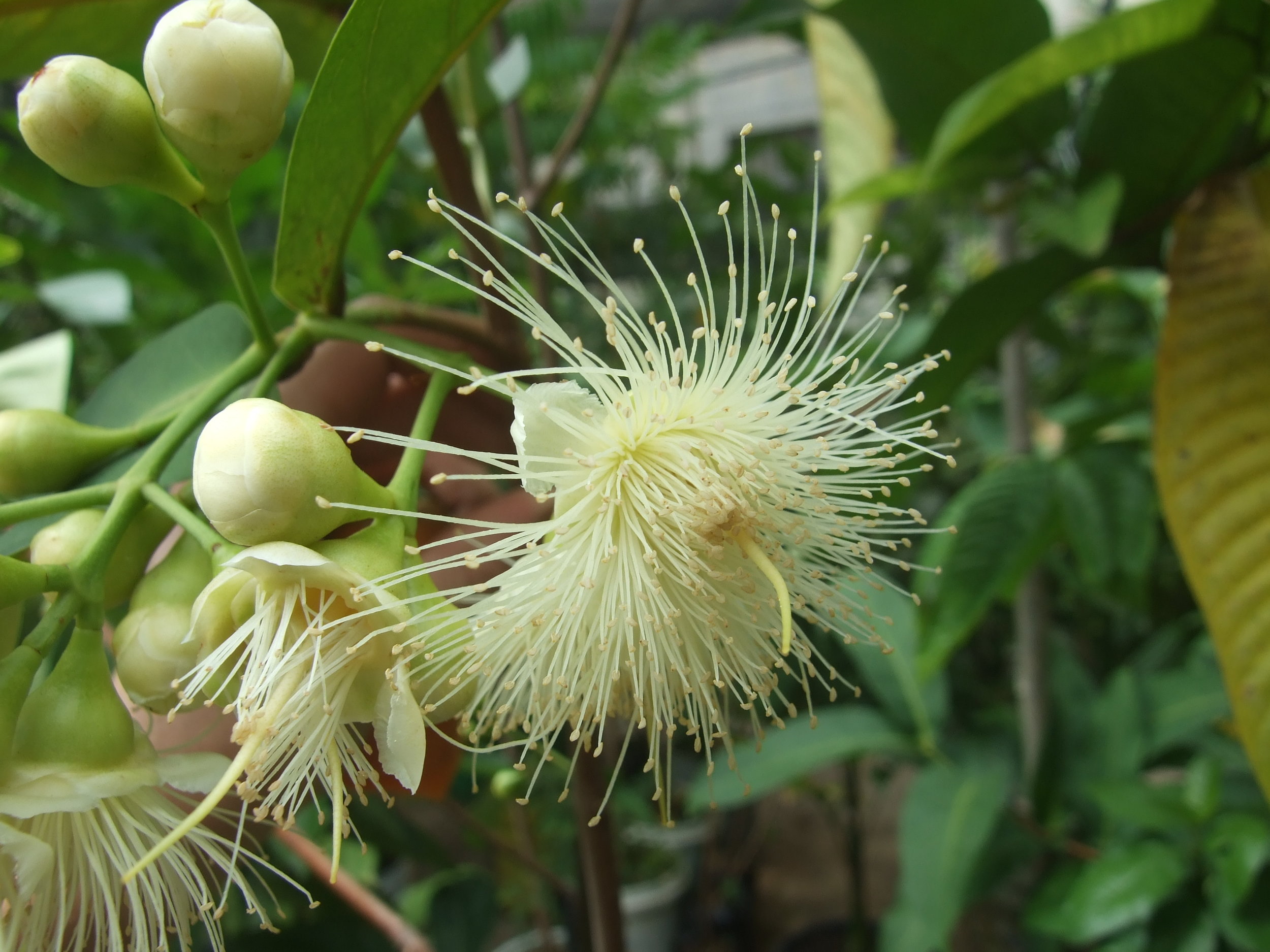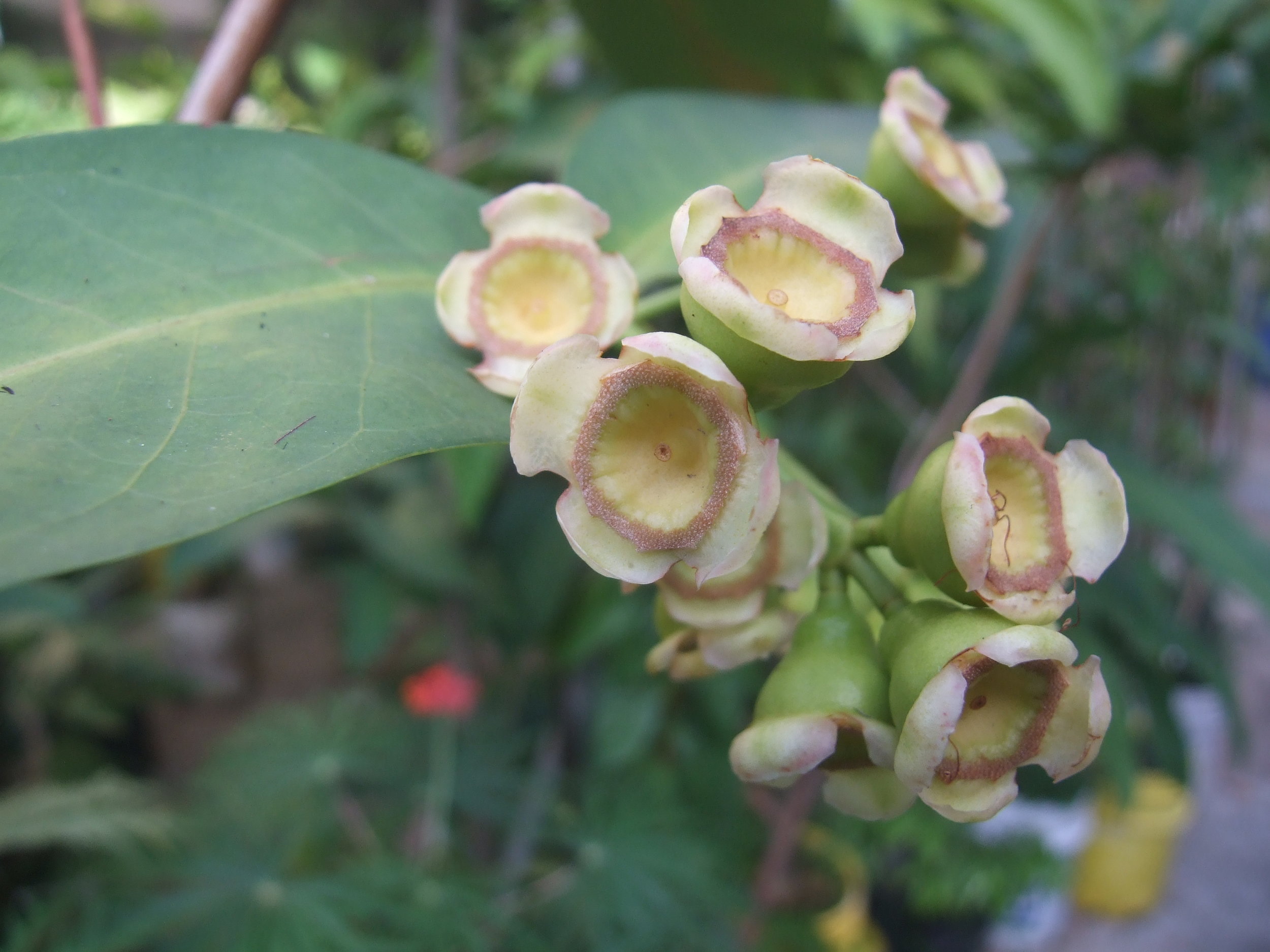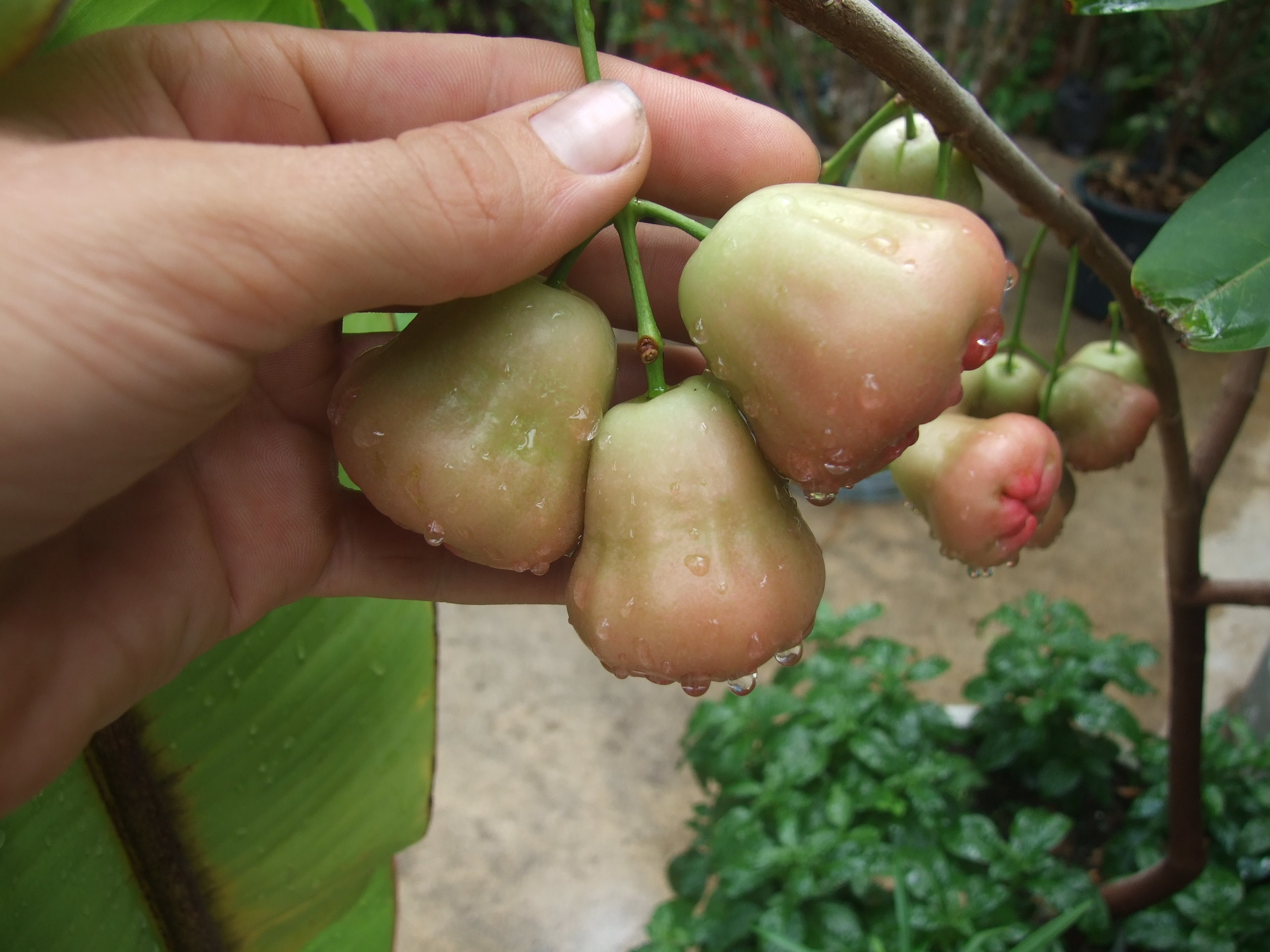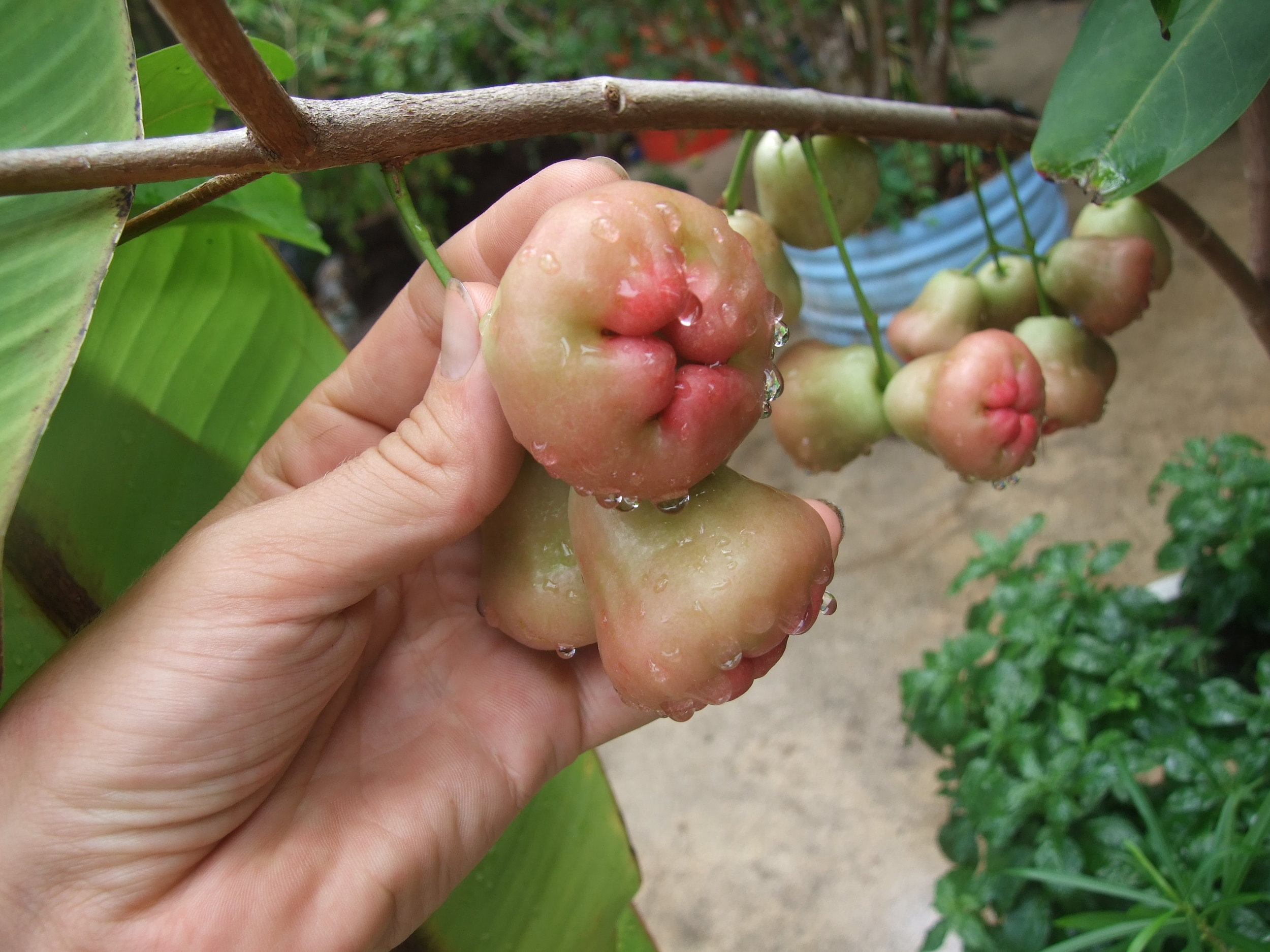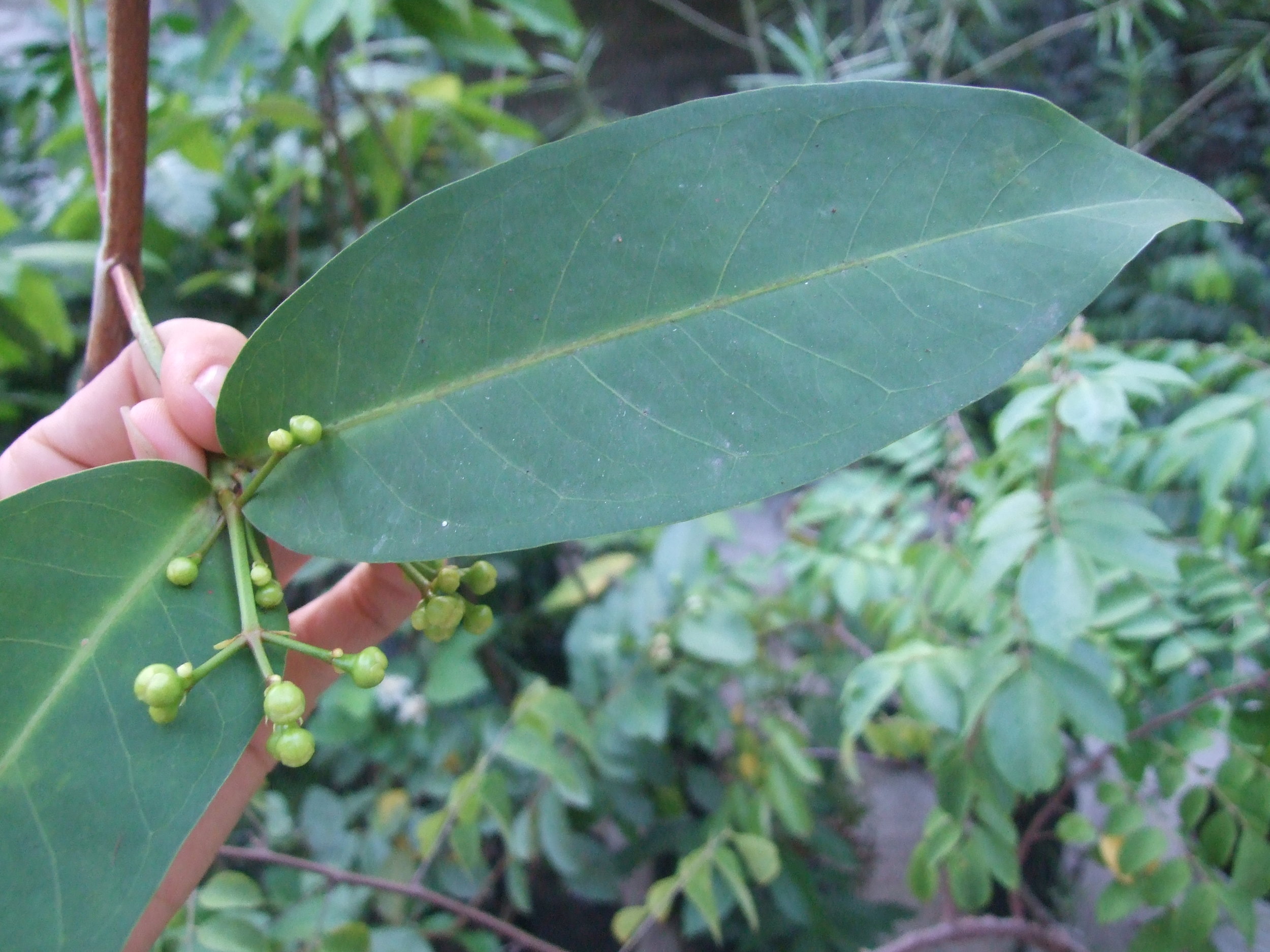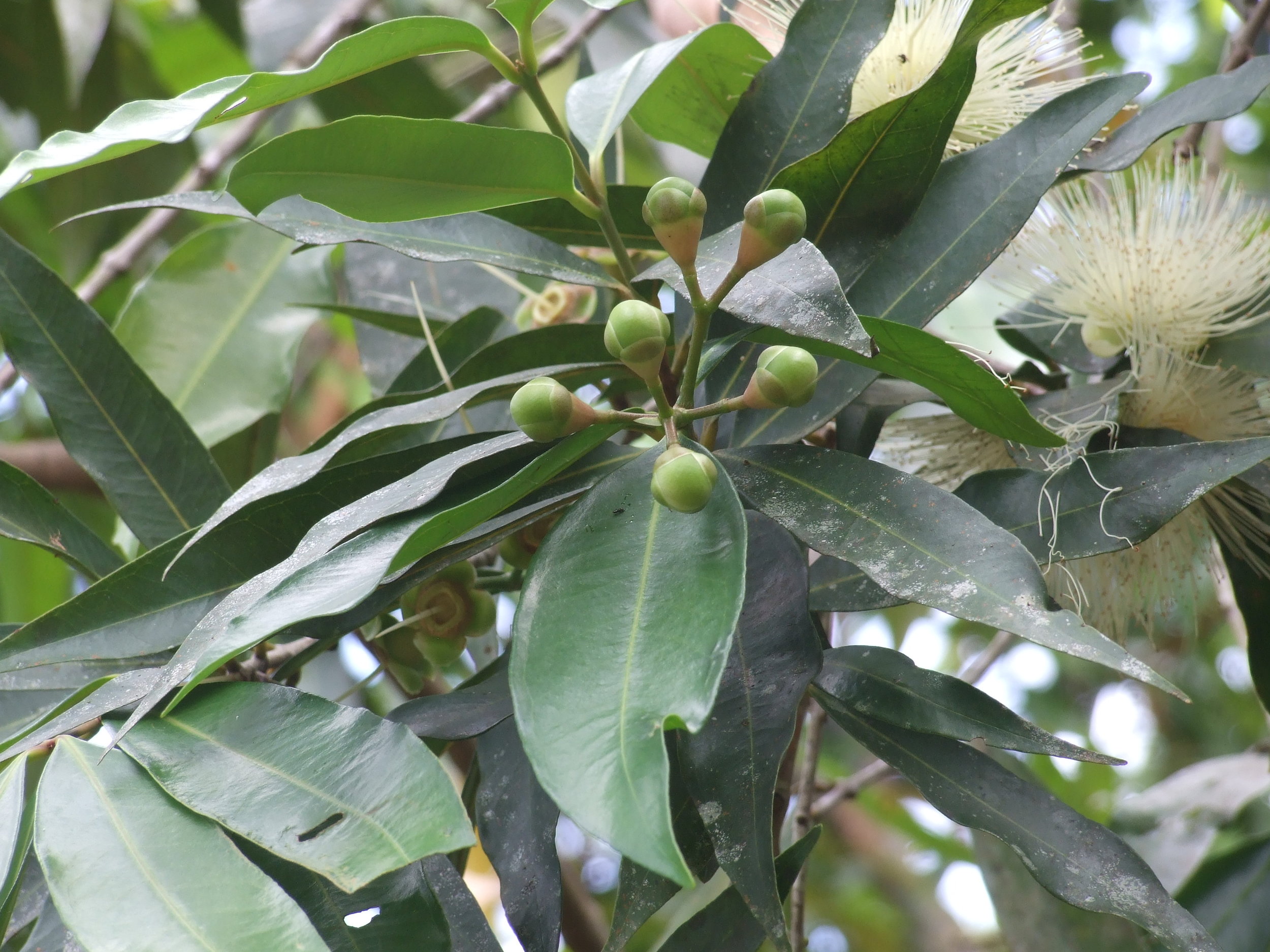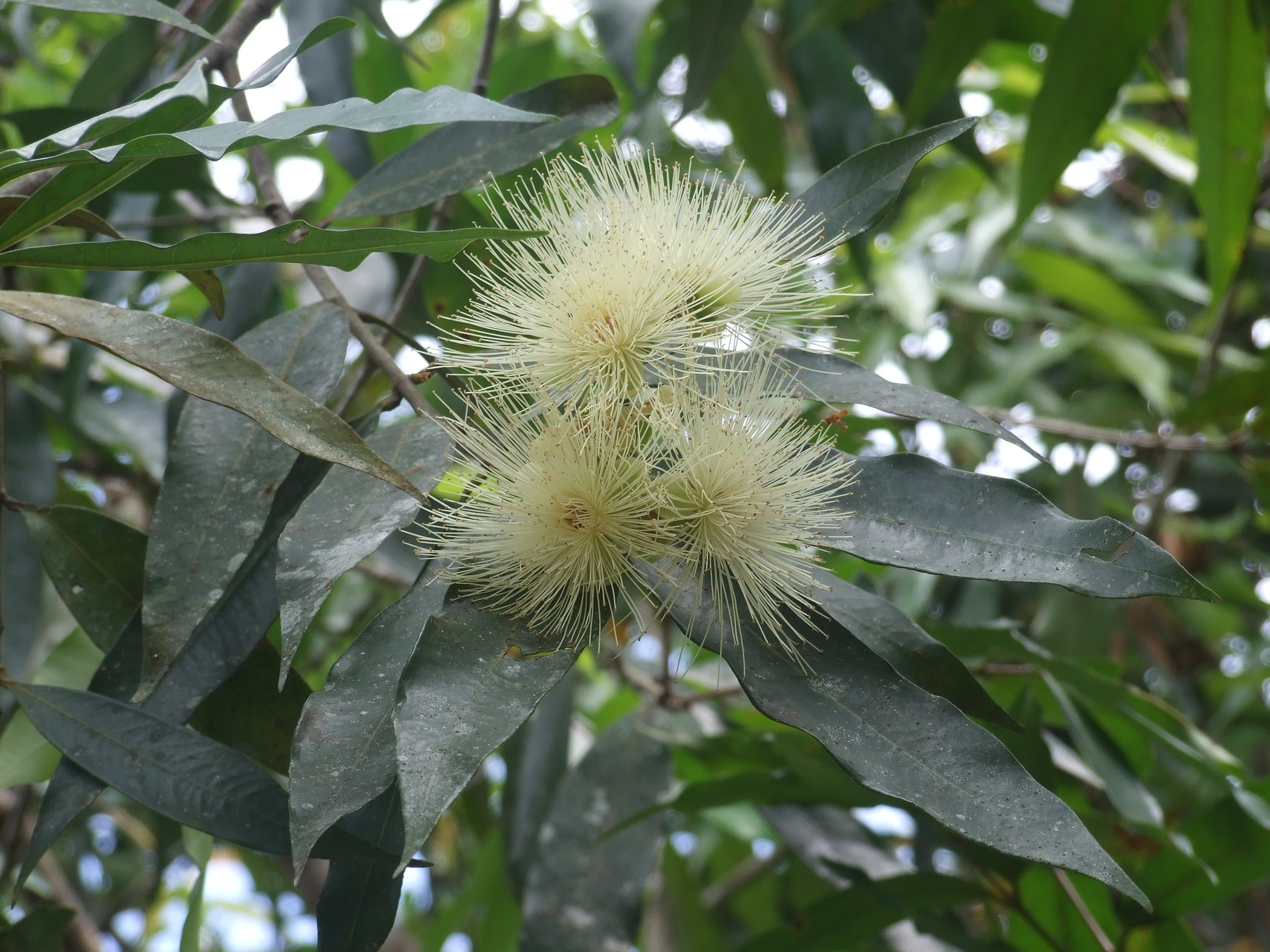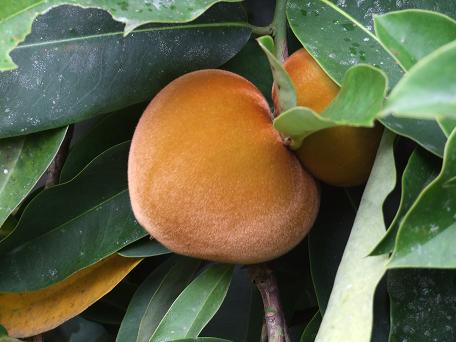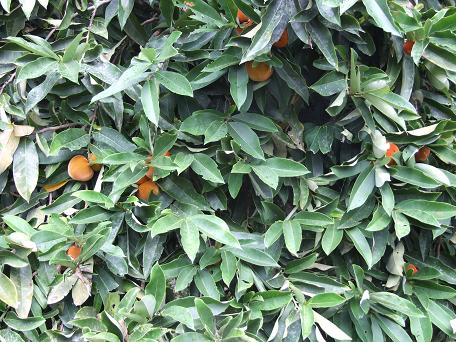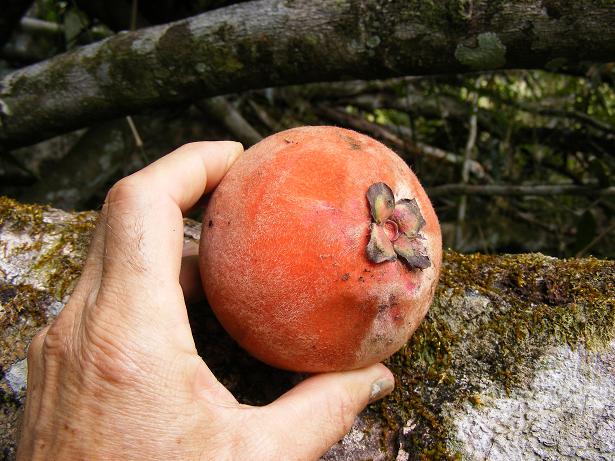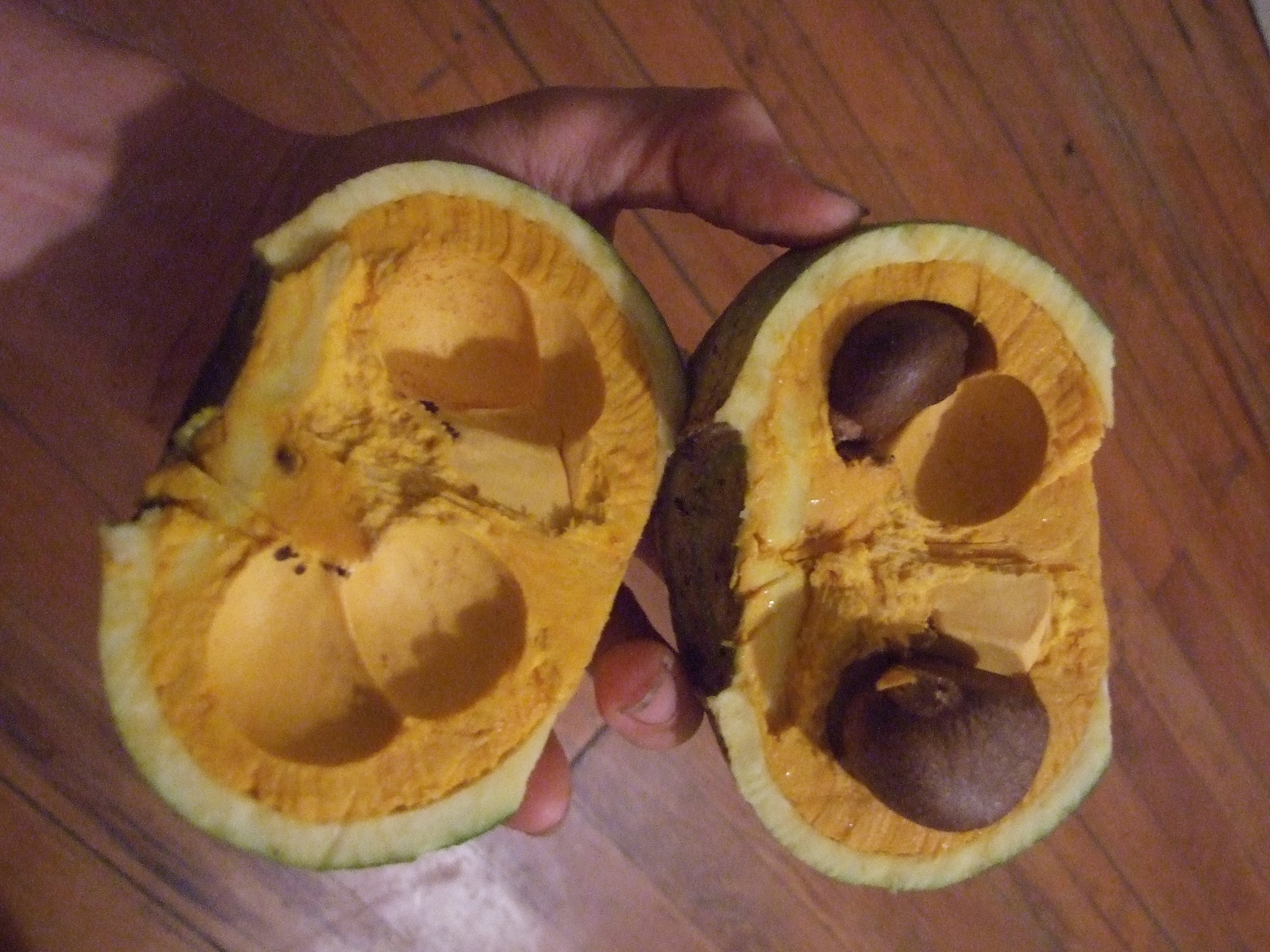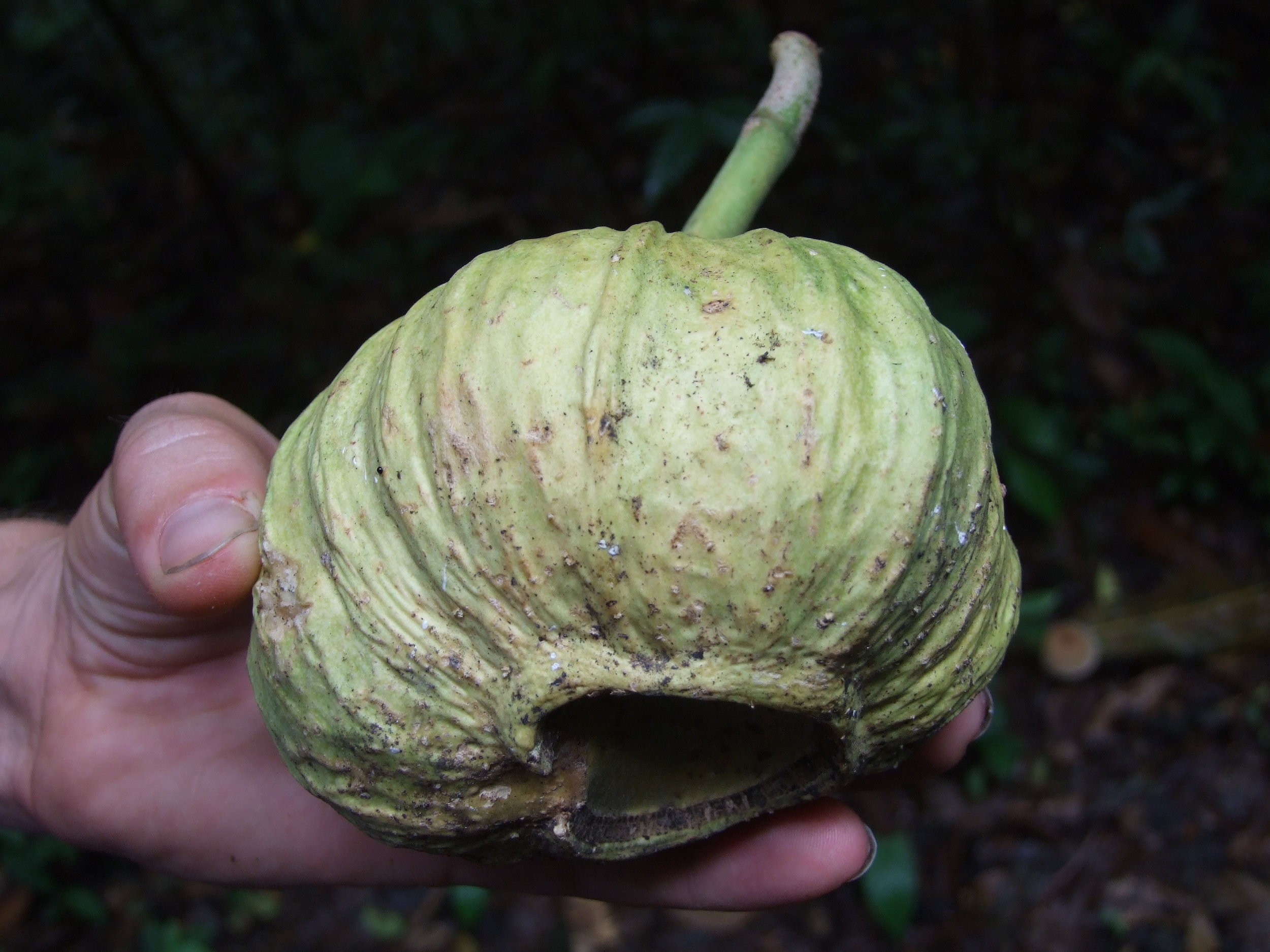Moraceae, Artocarpus lakoocha, Monkey jack, Lakoocha, Emerald Jack, Pachoo Phanas (Bangalore), Badahar (Guyana), Selengking (Borneo)
This is the ripe orange bumpy fruit. I was unable to identify it for a long time, just recently found it in a book called Fruits and Cultivated Exotics that I found at Fairchild Botanical Garden. The taste and texture are very interesting. Taste is tangy and slightly citrus-like. The texture is like that of unripe jackfruit only finer fibers, as a visitor to the site pointed out (see comments), similar to kiwi. I germinated a bunch of seed about five months ago. The small trees are just now about to surpass me in height. Supposedly the tree yields an excellent hardwood, said to be superior to Teak, useful for toolhandles and construction both above and below water. The trees I saw were not cultivated as a hardwood.
This photo was taken a month after transplanting the germinated seedlings, they are growing quickly. I'll take some up-to-date photos to upload today.
Oxalidaceae, Averrhoa carambola, grafted Carambola (starfruit) flowers and young fruit
The tree is small, usually no larger then 12 m high. We grow grafted varieties in Panama that begin to bear fruit when just a few feet tall. Grafted trees can be managed at four meters and, in favorable conditions, bear so much fruit the branches will break if they aren’t harvested.
The fruit, as the name would suggest, is shaped like a star. There are multiple varieties of Starfruit, both sweet and sour. Sweet varieties tend to be lighter in color and smaller, about five inches long and three inches wide. Sour varieties are larger and more orange in color.
Starfruit is especially rich in Vitamins A, B, C, phosphorus and calcium. The vitamin C content is comparable to that of an orange. Each fruit contains between 8 – 10 % sugar.
In addition to the fruit, both the flower and leaf are edible. I have two Taiwanese varieties. Very compact, heavily bearing trees. I'm trying them on balconies in large pots.
Myrciaria floribunda - Rumberry, Guavaberry
M. floribunda is a very slow growing species, rarely found cultivated in its region of origin, although wild trees are typically left in pastures that have been cleared of their vegetation.
I know of a single tree and have harvested fruit once. Bears heavily.
In my experience the small, hard seeds can take a while to germinate. After months of waiting for germination I kind of lost track of them. Eventually I got a few sprouts. A light scarification might prove beneficial in expediting the process. Next season i'll germinate a few dozen, as this is a very uncommon in interesting tree.
Euphorbiaceae, Plukenetia conophora, Sacha inchi
Moringaceae, Moringa oleifera, horshraddish tree, drumstick tree
Yielding protein, oil, and carbohydrates, and with a load of vitamins and minerals, Moringa is possibly the planet's most underdeveloped tree. A sort of food market on a stalk, it yields at least four different edibles: pods, leaves, seeds, roots. Beyond edibles, it provides products that make village life more self-sufficient in rural communities: lubricating oil, lamp oil, wood, paper, liquid fuel, skin treatments, the means to purify water, and more. The green pods, which look like giant green beans but taste something like asparagus, are notably nutritious. Foliage is an important food product as well. People in various countries around the world boil up the tiny leaflets and eat them like spinach. In general this supreme plant shows a capacity to help solve problems such as hunger, malnutrition, rural poverty, disease, deforestation, and visual blight. Although the experiences come almost exclusively from India, the genus Moringa is inherently African, so it has ancestral roots in sub-Saharan soils. Read more in this informative PDF
Syzygium samarangense - Java Apple
This is an air layered variety I got from Taiwanese agronomistsIn Panama
Syzygium jambos - Rose Apple
Originally from Southeast Asia (East India and Malaya) the Rose Apple has been introduced into tropical regions around the world. It is very common in the Caribbean, brought by English colonizers. Apparently it is being grown in the San Francisco area of N. California. The tree grows with a broad, dense canopy, usually relatively small (5 m), but can reach heights of 20 m. The leaves are long and thin.
The name Rose Apple comes from the scent of the flowers and the taste of the fruit, both of which strongly resemble roses, or rose water. The fruit is round, 3 -5 centimeters in diameter and yellow in color, typically eaten raw, but also used in jellies due to the high pectin content. The fruit contains up to 11% sugar and is considered to be a good source of calcium, iron (2 mg/100 g) and niacin (1.1 mg/100 g).
This species makes a great windbreak due to its low, dense growth habit.
The tree is often wider then it is tall, makes a spectacular ornamental tree, but needs ample space and sun. Although it is somewhat cold hardy, it should be protected from frosts.
Ebenaceae, Diospyros blancoi, velvet apple, mabolo
Mabolo, or velvet apple is an attractive tree, closely related to the persimmon and ebony.
As the English common name would suggest, the fruit is covered in a fine, velvety skin, usually reddish brown. Inside is a soft, creamy flesh with a unique taste and aroma. The species is native to the Philippines where the tree is referred to as kamagong. It is strictly a tropical tree, drought tolerant growing well in a wide variety of soils, from sea level to 2,400 feet. Planted from the seed the tree can take up to six years to bear fruit. Trees propagated from cuttings produce fruit in three to four years.
Lecythidaceae, Gustavia superba, membrillo, paco



